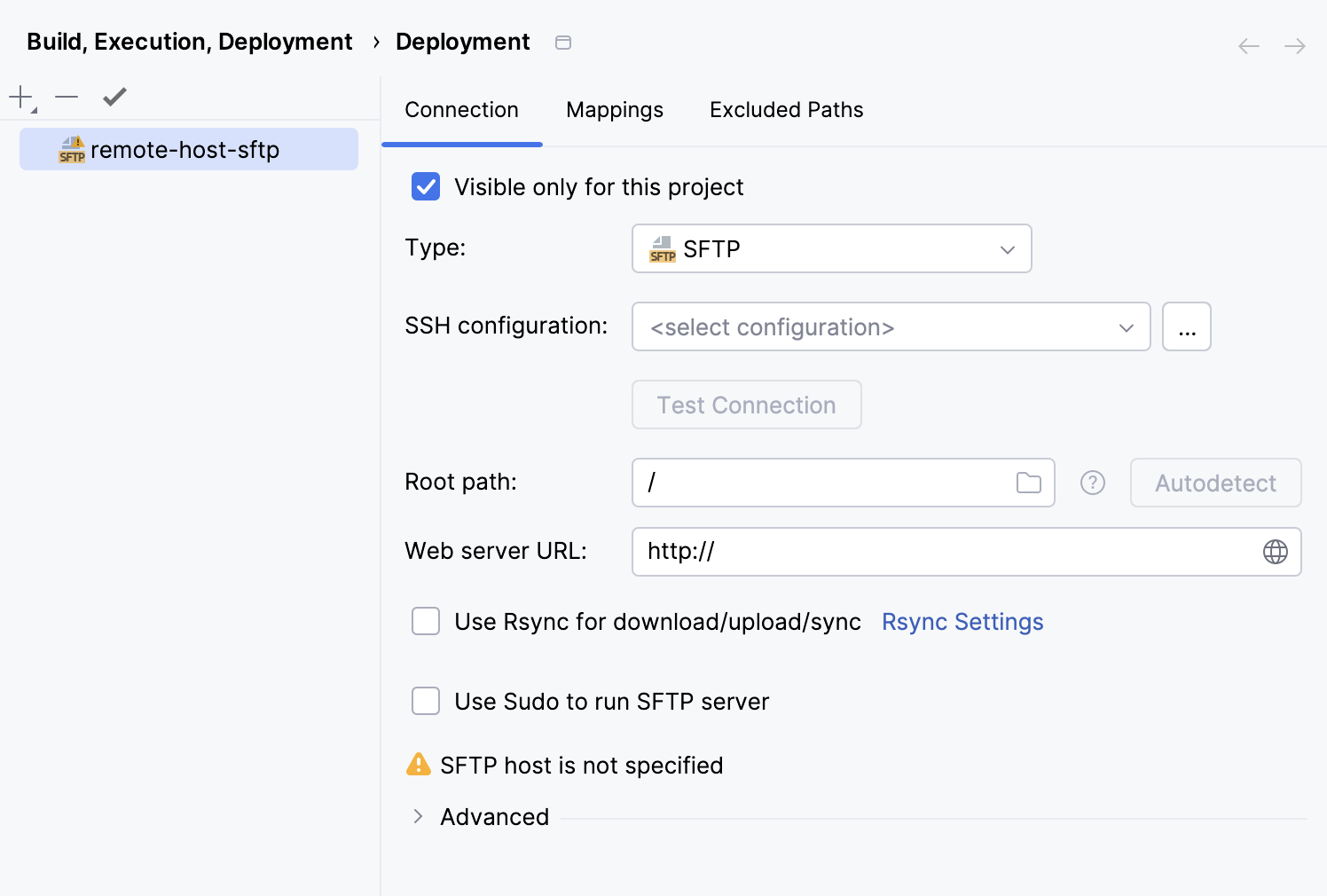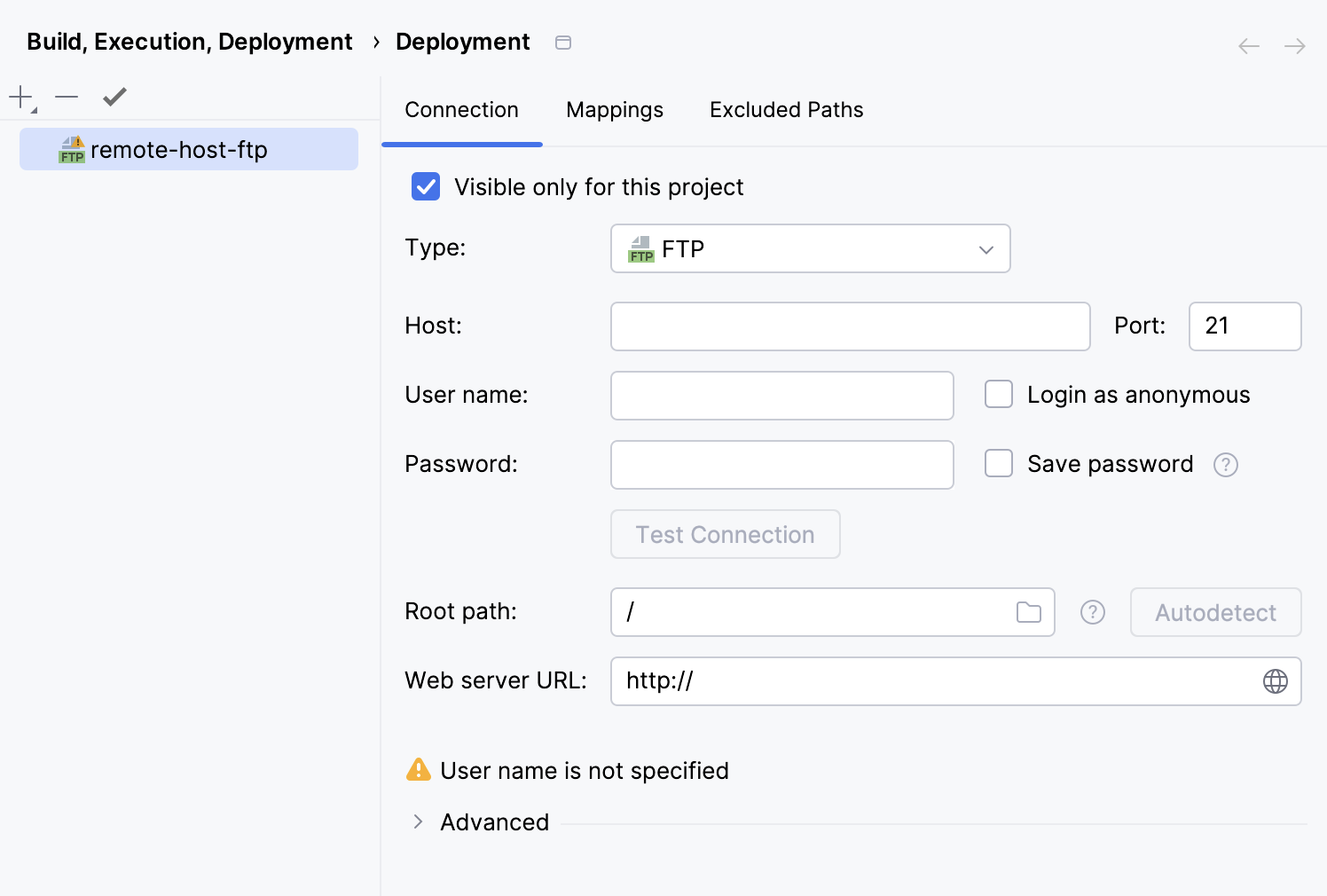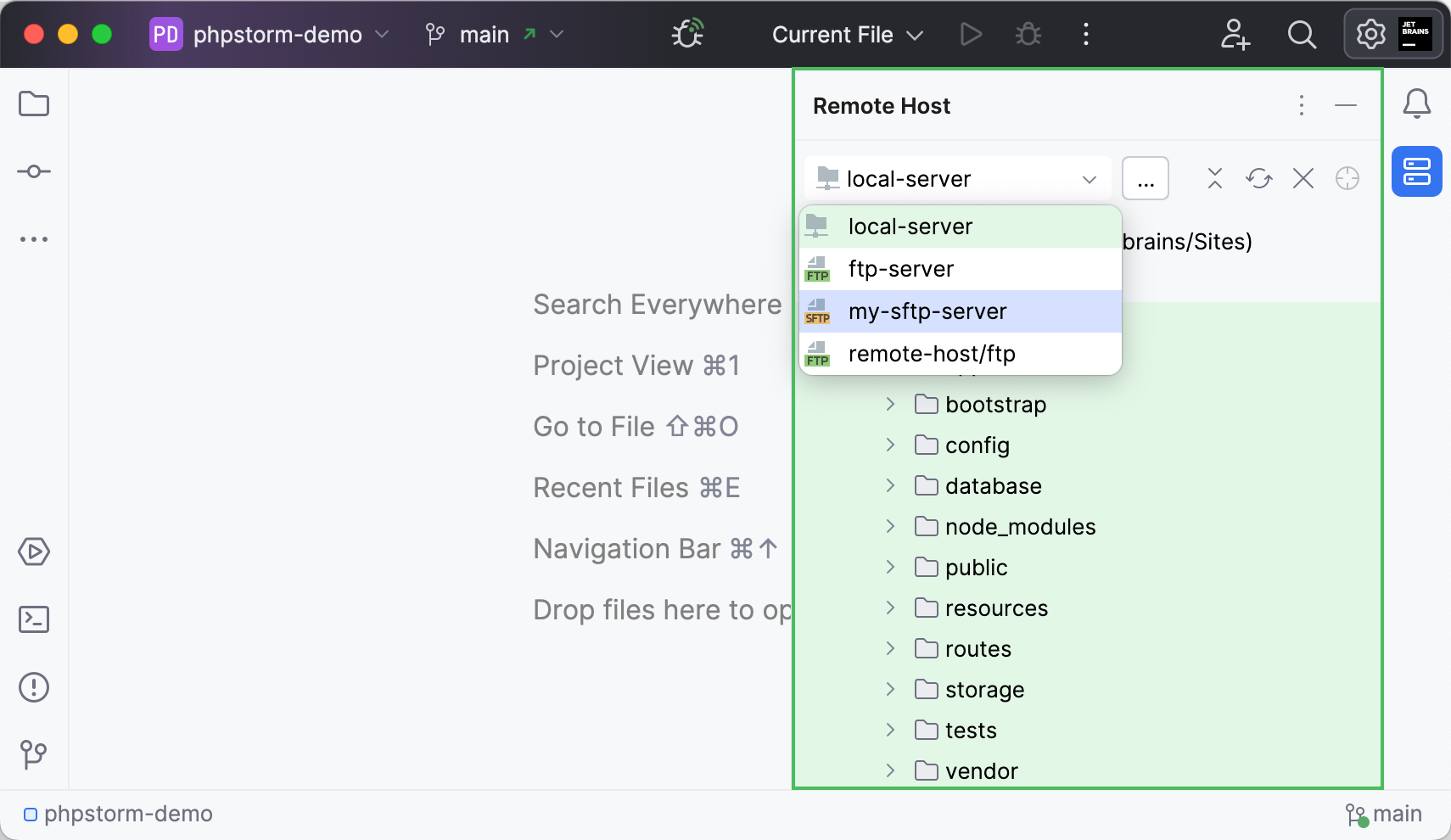Create a remote server configuration
In a remote server configuration, the server runs on another computer (a remote host). To access files on the remote server, use FTP/SFTP/FTPS/WebDAV protocols.
To create a remote server configuration in PhpStorm, you need to:
Authenticate with the remote host and set up connection between the web server installed on it and PhpStorm.
Configure mapping between the PhpStorm project and the project folder on the host and its corresponding URL path.
1. Specify the name, type, and visibility of a server configuration
Press Ctrl+Alt+S to open settings and then select .
Alternatively, go to in the main menu.
In the left-hand pane that lists all the existing server configurations, click
and select the server configuration type depending on the protocol you are going to use to exchange the data with the server.
FTP: choose this option to have PhpStorm access the server via the FTP file transfer protocol.
SFTP: choose this option to have PhpStorm access the server via the SFTP file transfer protocol.
FTPS: choose this option to have PhpStorm access the server via the FTP file transfer protocol over SSL (the FTPS extension).
WebDAV: choose this option to have PhpStorm access the server via the WebDAV file transfer protocol (the WebDAV extension).
In the Create New Server dialog that opens, type the name of the connection to the server and click OK. The Create New Server dialog closes and you return to the Connection tab of the Deployment node.
From the list of servers, select the one you want to make default and click
Use as Default on the toolbar above the list of servers to mark the server as default.
Clear the Visible only for this project checkbox to enable reuse of this server access configuration in other projects.
2. Set up connection to the remote host and its server
In the tab (Ctrl+Alt+S ), specify settings for the remote host access, files transfer parameters, and the web server configuration:
Specify the host address, port, and user credentials to access it. The required fields differ depending on the used protocol type.

SSH configuration: select one of the previously created SSH configurations from the list, or click
and create a new configuration as described in Create SSH configurations.
Use rsync for download/upload/sync: select the checkbox to have PhpStorm use Rsync for uploading and downloading files, which can increase file transfer speeds.
Click Rsync Settings to open the Rsync settings page and configure Rsync.

Host: specify the hostname of the server to exchange data with.
Port: specify the port to which this server listens. The FTP/FTPS, the default value is
21. For WebDAV, the default value is6180.Username and Password: provide the username and password specified during registration on the host.
Select the Save password checkbox to store the password in PhpStorm permanently (otherwise, it will only be stored until the IDE restart).
Or, alternatively, select the Login as anonymous checkbox to enable anonymous authentication with the server and use the email address as a password.
Set up a connection to the remote host's web server:
Root path: specify the folder used as the remote directory root for browsing the remote file system and setting the server path mappings and excluded paths.
Do one of the following:
Accept the default
/path, which points at the root folder on the server.Type the path manually or click
and select the desired folder in the Choose Root Path dialog that opens.
Click Autodetect. PhpStorm detects the user home folder settings on the FTP/SFTP server and sets up the root path according to them. The button is only enabled when you have specified your credentials.
Web server URL: specify the URL address configured for the folder specified in Root path. Both HTTP and HTTPS are supported.
Click
Browse in the right-hand corner of the field to open and check the provided web server URL.
(Optional) Expand the Advanced section to configure more settings as described in:
3. Map project folder to a server folder and URL path
In the tab (Ctrl+Alt+S ), specify:
Local path: the absolute path to the local project folder. PhpStorm automatically fills out this field with the path to the currently opened project.
Deployment path: a folder under the server root where PhpStorm will upload the contents of the project folder specified in the Local path field.
If a folder with the specified name does not yet exist on the server, PhpStorm will create it when you trigger project upload.
Web path: the URL path configured for the folder specified in Deployment path. You can use a slash (
/) to point to the root folder, or leave the field blank if the directory is not accessible from the web.
Now that you have the server configuration added, you can access the server's files and folders in the Remote Host tool window. Go to in the main menu, and in the tool window that opens, select the configured server from the drop-down list.
